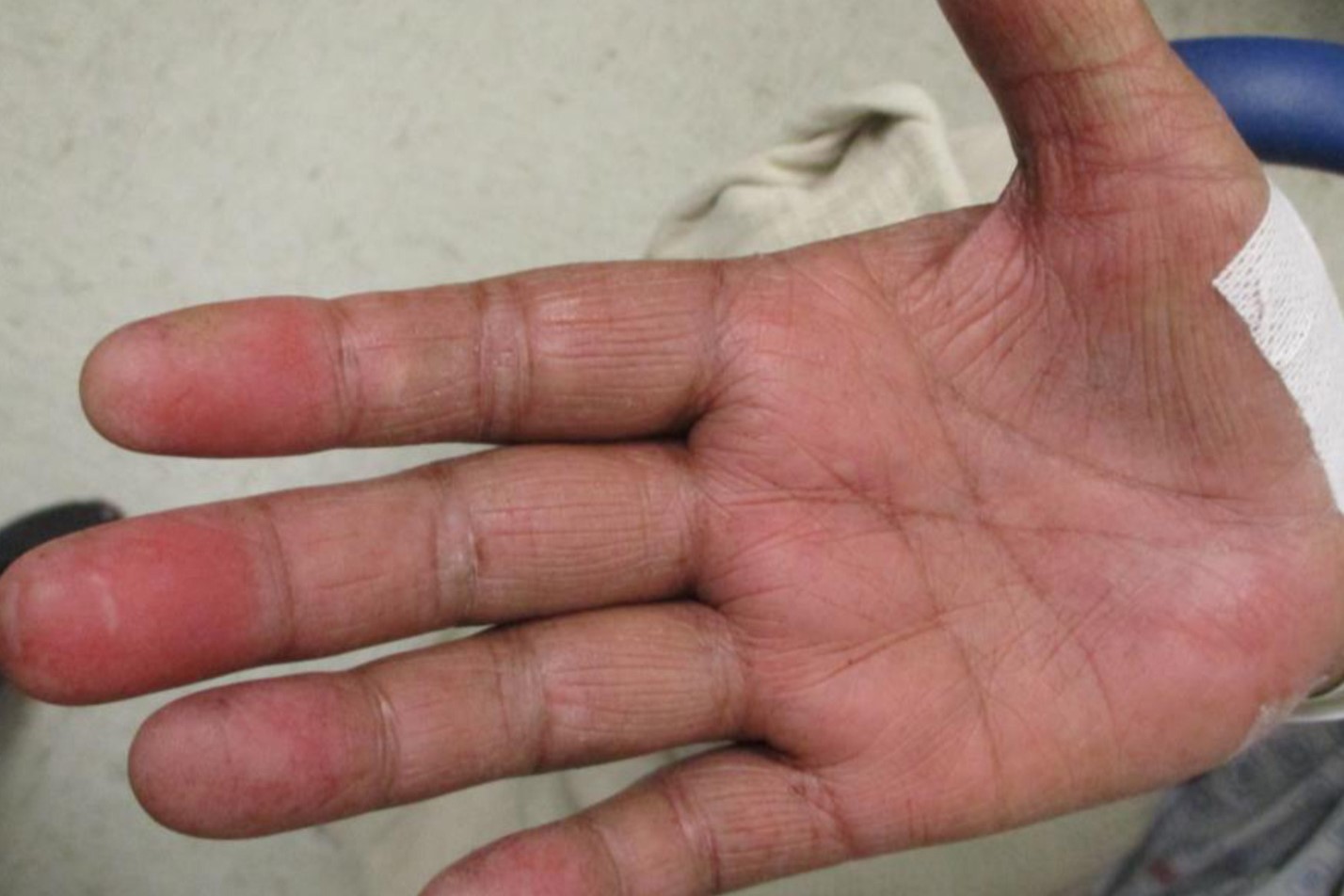
What is Kabuki Syndrome? Kabuki Syndrome is a rare genetic disorder that affects various organ systems and is characterized by distinctive facial features, developmental delays, and intellectual disabilities. Named after the makeup used in traditional Japanese Kabuki theater, this condition impacts approximately 1 in 32,000 births. The primary genetic causes are mutations in the KMT2D and KDM6A genes. Individuals with Kabuki Syndrome often experience a range of symptoms, including hypotonia, cardiac anomalies, gastrointestinal issues, and renal problems. Diagnosis typically involves genetic testing and a multidisciplinary approach to care. Understanding Kabuki Syndrome is crucial for providing appropriate support and management for those affected.
What is Kabuki Syndrome?
Kabuki syndrome is a rare genetic disorder that affects multiple organ systems. It gets its name from the distinctive facial features of those who have it, which resemble the makeup used in traditional Japanese Kabuki theater.
- Kabuki syndrome is a rare genetic disorder with an estimated prevalence of 1 in 32,000 births across genders, races, and ethnicities.
- The syndrome was first described in 1981 by Japanese researchers Dr. Norio Niikawa and Dr. Yoshikazu Kuroki.
- The name "Kabuki syndrome" is derived from the distinctive facial features of individuals with the syndrome, which resemble the makeup used by actors in Kabuki theater.
Genetic Causes of Kabuki Syndrome
Understanding the genetic basis of Kabuki syndrome helps in diagnosing and managing the condition.
- Kabuki syndrome is primarily caused by mutations in two genes: KMT2D (formerly MLL2) and KDM6A.
- Mutations in KMT2D account for approximately 75% of cases, while mutations in KDM6A account for about 5% of cases.
- In some cases, the genetic cause remains unknown, making diagnosis more challenging.
- Most cases of Kabuki syndrome are caused by de novo mutations in the KMT2D gene, which are inherited in an autosomal dominant pattern.
- The KDM6A gene follows an X-linked dominant inheritance pattern, affecting both males and females who are heterozygous.
Clinical Features of Kabuki Syndrome
Kabuki syndrome manifests in various ways, affecting different parts of the body.
- The clinical features of Kabuki syndrome include distinctive facial dysmorphism, growth retardation, developmental delay, and intellectual disability.
- Individuals with Kabuki syndrome often have elongated structures surrounding the eyes, a shortened and depressed nose, thinning of the upper lip, and thickening of the lower lip.
- They may also have large and prominent ears, hypertrichosis (excessive hair growth), and scoliosis.
- Developmental delay is a hallmark of Kabuki syndrome, with affected individuals often experiencing significant delays in physical and psychomotor development.
- Intellectual disability is present in more than 90% of individuals with Kabuki syndrome, ranging from mild to severe.
- Variable behavioral issues are common in individuals with Kabuki syndrome, including autistic features and other neurobehavioral abnormalities.
- Cardiac anomalies are reported in approximately 32% of cases, highlighting the need for thorough cardiac evaluation.
- Gastrointestinal issues, such as gastrointestinal anomalies and feeding difficulties, are frequently observed in individuals with Kabuki syndrome.
- Renal anomalies, including kidney problems, are also common in individuals with Kabuki syndrome.
- Hypotonia during infancy is a critical diagnostic criterion for Kabuki syndrome, often accompanied by developmental delay and intellectual disability.
Diagnosing Kabuki Syndrome
Accurate diagnosis is crucial for managing Kabuki syndrome effectively.
- The international consensus diagnostic criteria for Kabuki syndrome include a history of infantile hypotonia, developmental delay and/or intellectual disability, typical dysmorphism, and a confirmed pathogenic or likely pathogenic variant in KMT2D or KDM6A.
- Genetic testing is essential for diagnosing Kabuki syndrome. Techniques such as Next-Generation Sequencing, Sanger Sequencing, and Whole-Exome Sequencing are commonly used to identify pathogenic variants in KMT2D and KDM6A.
- In some cases, the clinical picture may not fully align with the expected genetic etiology, leading to diagnostic challenges. In such cases, alternative syndromes or atypical presentations may be considered.
Treatment and Management
While there is no cure for Kabuki syndrome, various treatments can help manage its symptoms.
- Care for individuals with Kabuki syndrome often involves a multidisciplinary team, including specialists in genetics, pediatrics, cardiology, gastroenterology, and psychology.
- Management focuses on controlling physical and psychomotor development through rehabilitation and multi-specialist care.
- Speech therapy and behavioral interventions are crucial for addressing neurobehavioral issues.
- Several organizations support individuals with Kabuki syndrome, providing resources and community support for families affected by the syndrome.
Research and Uncertainty
Despite advances, much remains unknown about Kabuki syndrome, necessitating ongoing research.
- Despite significant advances in understanding Kabuki syndrome, there is still much uncertainty regarding its etiology and management.
- The symptoms associated with Kabuki syndrome can vary widely between individuals, highlighting the need for personalized care plans.
- Initially thought to be specific to East Asian populations, Kabuki syndrome is now recognized to affect individuals across various ethnicities.
- Approximately 400 cases of Kabuki syndrome have been reported globally, indicating a relatively rare but significant condition.
Distinctive Features
Kabuki syndrome has several distinctive features that help in its identification.
- Individuals with Kabuki syndrome often exhibit distinctive craniofacial features, including eversion of the lower lateral eyelid, arched eyebrows with the lateral one-third dispersed or sparse, and a depressed nasal tip.
- The eversion of the lower lateral eyelid is a characteristic feature often observed in individuals with Kabuki syndrome.
- Arched eyebrows with the lateral one-third dispersed or sparse are another distinctive craniofacial feature associated with Kabuki syndrome.
- A depressed nasal tip is commonly observed in individuals with Kabuki syndrome, contributing to the syndrome's unique facial appearance.
- Large and prominent ears are frequently seen in individuals with Kabuki syndrome, adding to the syndrome's distinctive facial features.
- Hypertrichosis, or excessive hair growth, is another characteristic feature often observed in individuals with Kabuki syndrome.
- Scoliosis, a curvature of the spine, is also commonly observed in individuals with Kabuki syndrome.
Neurological and Behavioral Issues
Neurological and behavioral issues are significant components of Kabuki syndrome.
- Neurological issues, including infantile hypotonia, developmental delay, intellectual disability, epilepsy, and behavioral abnormalities, are significant components of Kabuki syndrome.
- Speech and language issues, including unintelligible or disordered speech originating from oral motor hypotonia, are frequently reported in individuals with Kabuki syndrome.
- Behavioral abnormalities, including autistic-like features, are common in individuals with Kabuki syndrome, requiring specialized behavioral interventions.
- Cardiac defects are reported in approximately 32% of cases, emphasizing the need for thorough cardiac evaluation and management.
Kabuki Syndrome: A Complex Condition
Kabuki syndrome is a rare genetic disorder that affects multiple organ systems. Named after the distinctive facial features resembling Kabuki theater makeup, it was first described in 1981. Mutations in the KMT2D and KDM6A genes cause most cases. Symptoms include facial dysmorphism, developmental delay, intellectual disability, and various physical anomalies like cardiac and renal issues. Diagnosing Kabuki syndrome involves genetic testing and meeting specific clinical criteria. Treatment focuses on managing symptoms through a multidisciplinary approach, including speech therapy and behavioral interventions. Despite advances, much remains unknown, and ongoing research aims to uncover more about its genetic and molecular mechanisms. Support organizations provide essential resources for affected families. Understanding Kabuki syndrome's complexity is crucial for offering appropriate care and improving the quality of life for those affected.
Was this page helpful?
Our commitment to delivering trustworthy and engaging content is at the heart of what we do. Each fact on our site is contributed by real users like you, bringing a wealth of diverse insights and information. To ensure the highest standards of accuracy and reliability, our dedicated editors meticulously review each submission. This process guarantees that the facts we share are not only fascinating but also credible. Trust in our commitment to quality and authenticity as you explore and learn with us.


